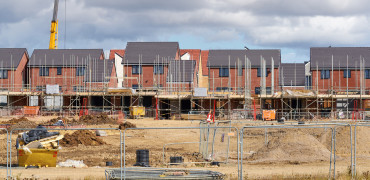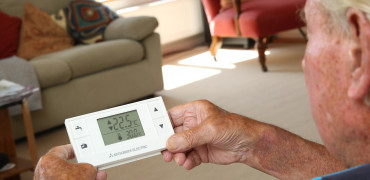At the end of October, the European Heat Pump Association met in Nuremberg for a Summit looking at the heat pump market, developments in the technology and general trends in the construction industry across the continent.
Statistics released from the summit show that the market has grown for the third year in a row but also point to challenges ahead for the sector.
The experts at the event are predicting continued growth in heat pumps averaging 15 per cent each year leading to a doubling of installed heat pumps within the next 6 to 7 years.
They are also predicting that this growth will result in cost reductions of around 36 per cent by 2030, which is also the year that the UK Government is predicting UK heat pump sales of over 1 million per year.
The social housing sector has been well ahead of the curve in the use of renewable heating systems
All of this predicted growth by the summit experts is organic and the EHPA report also highlighted how technological developments and an adjustment of the market framework could see this growth in sales and subsequent cost reduction occurring even sooner.
That still won’t be quick enough to achieve the decarbonisation of the continent’s built environment though and the authors of the report therefore hope that it can act as a catalyst and inspiration for both policy makers and the wider heat pump industry.
In order to boost further developments, The EPHA calls for policy makers to continually show support and recognition of heat pumps as an important and key technology, to help us achieve the radical energy transformation we need.
The report also showed that buildings are responsible for more than 40% of global energy use and 1/3 of global greenhouse gas emissions, both in developed and developing countries (United Nations Environment Programme).
Something that is highly pertinent in the UK is the point in the report that refers to Europe having around 40 per cent of residential buildings that were constructed before 1960 when heating technologies were not as advanced as today.
The EHPA report also highlights how the heating sector can contribute to the largest portion of carbon savings by 2030 if we undertake the appropriate retrofitting of existing buildings and replace inefficient, high-energy using equipment.
Savings from heat pumps
The EHPA report shows that the estimated 10 million heat pumps already deployed all over Europe generated:
-
Storage
333 GW: storage capacity
-
Useful heat
165 TWh: useful heat generated
-
Renewable energy
106 TWh: renewable energy
-
Emissionos
27.1 Mt: CO2 emissions saved
-
Final energy
135 TWh: final energy saved
Clean Growth Strategy
Here in the UK, October also saw the British government publish its Clean Growth Strategy to set out how it intends to meet the Fifth Carbon Budget (2028-32) – passed into law in 2016.
The strategy seeks to simplify requirements for businesses to measure and report on energy use, as well as rolling out low carbon heating with support for heat networks and looking to phase out the use of fossil fuels for homes that are off the gas grid.
In the government’s own words the Clean Growth Strategy is “an ambitious strategy to cut emissions while keeping costs down for consumers, creating good jobs and growing the economy.”
The strategy lists a raft of proposals to improve the energy efficiency of homes and commercial buildings, and encourage the adoption of low carbon heating.
The strategy is an acknowledgment that the world is quickly moving away from power generated by polluting fossil fuels to much cleaner sources of renewable energy, with ministers quoted as comparing the change to a clean, low carbon energy system as being as big a change as the move from the age of steam to the age of oil and gas.
Social housing has led the way
Of course, here in the UK the social housing sector has been well ahead of the curve in the use of renewable heating systems, with sales of air source heat pumps in particular not only helping to take tenants out of fuel poverty, but also allowing landlords to ensure their properties receive more complete and even heating throughout colder periods than is possible with other more expensive systems coupled with low income tenants.
Although we no longer have the Code for Sustainable Homes, I’m delighted that this has remained a standard the Housing Associations have been eager to embrace.
I do also think it is very important that the low carbon abilities of heat pumps were appropriately recognised in the latest review of the Renewable Heat Incentive – and that many social housing providers have recognised the long term benefits of improving the thermal properties of their stock and adding renewable heating such as heat pumps.
Joe Bradbury is Assistant Editor of Housing Association Magazine.



